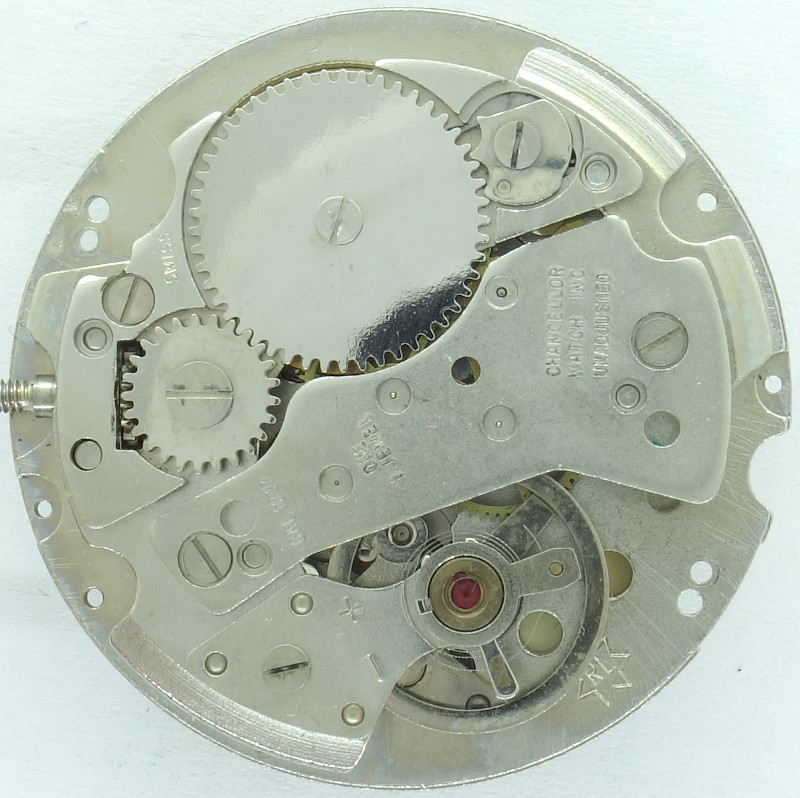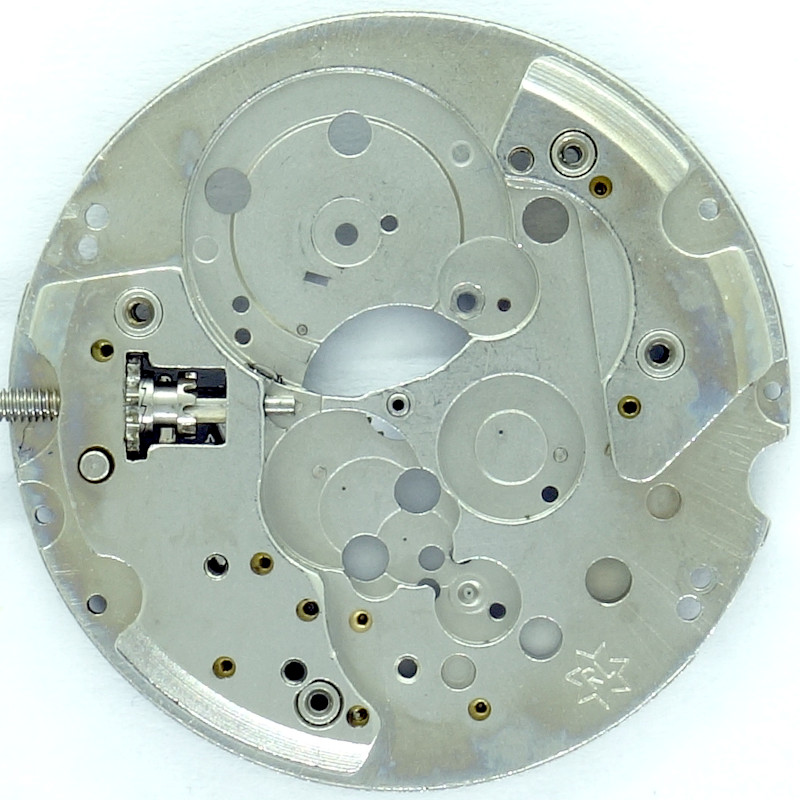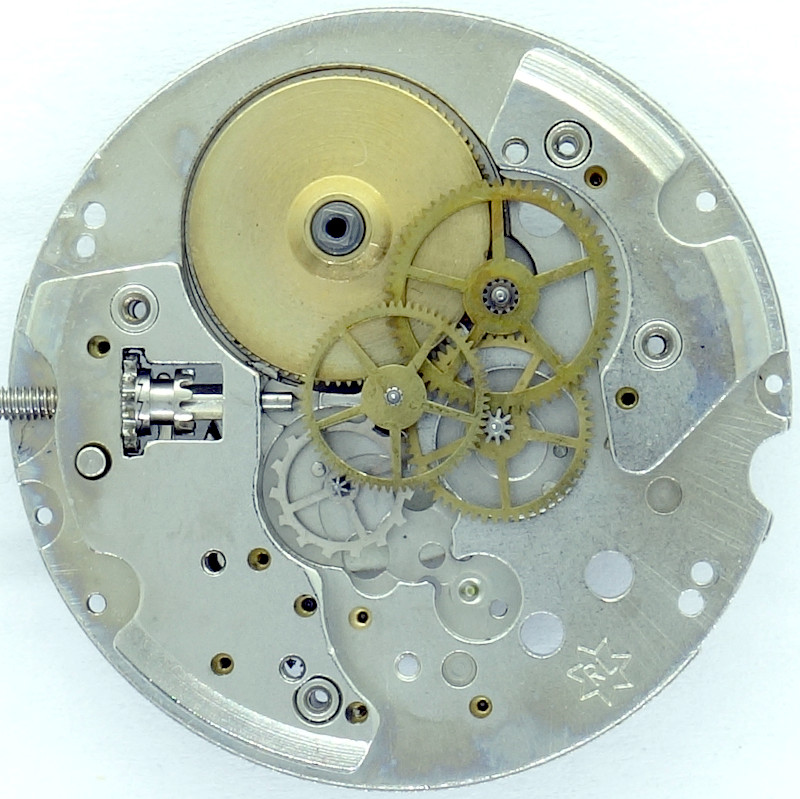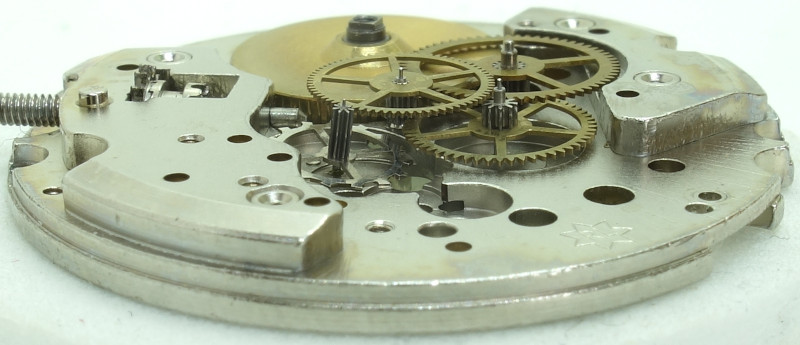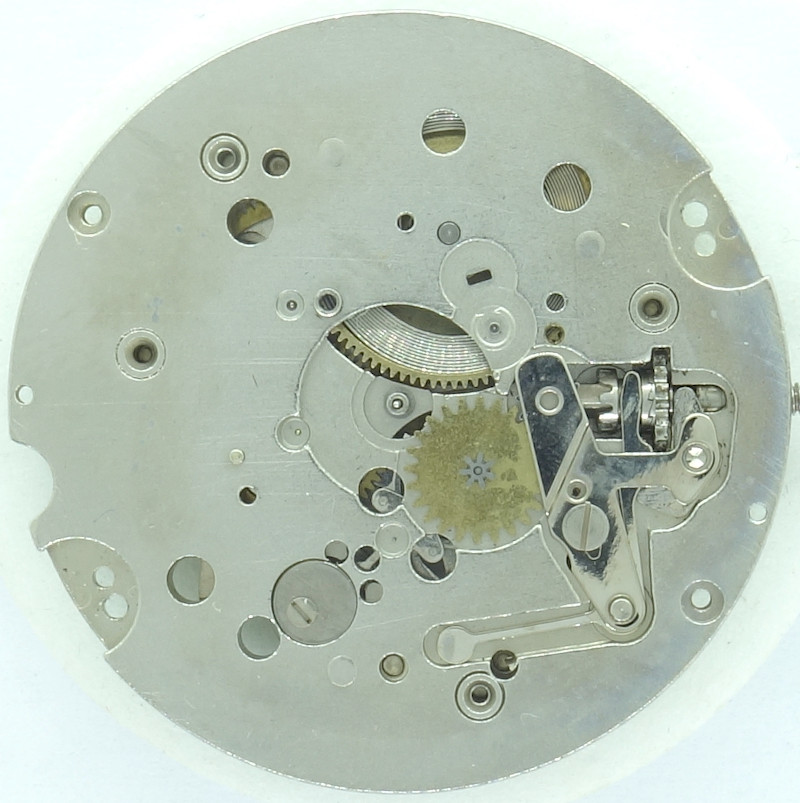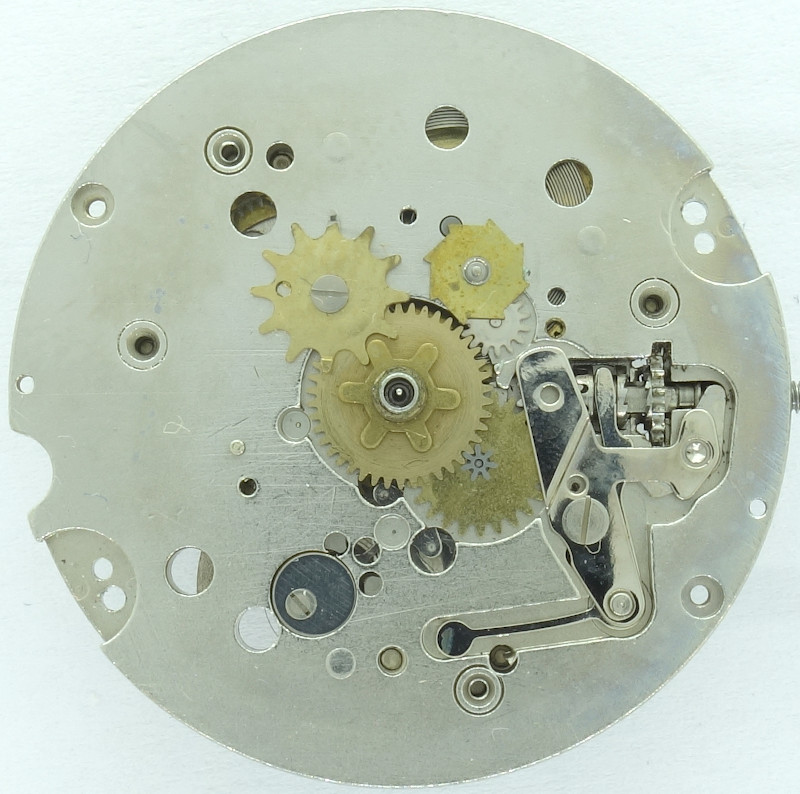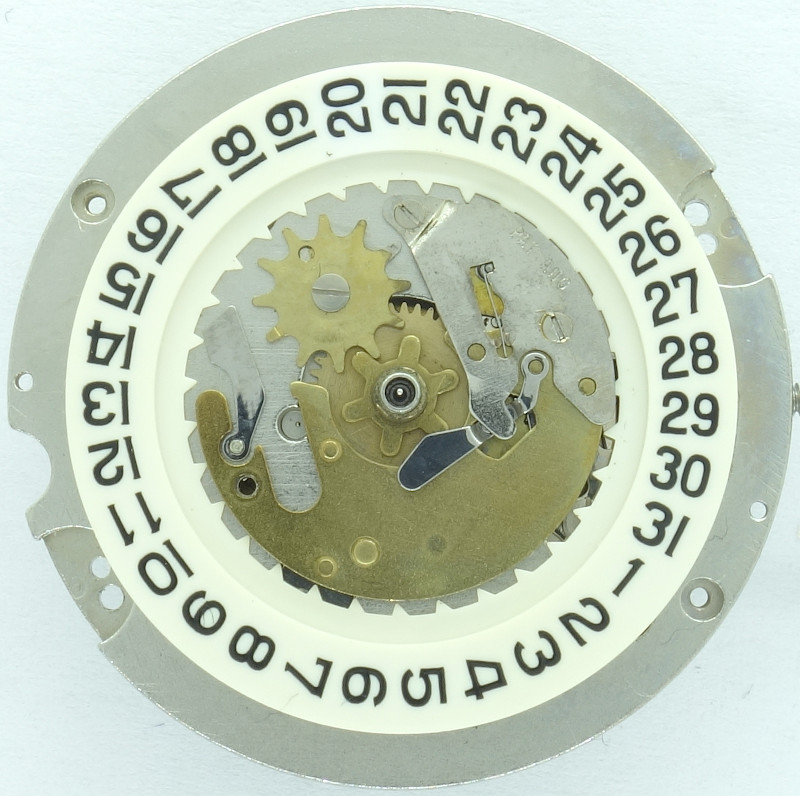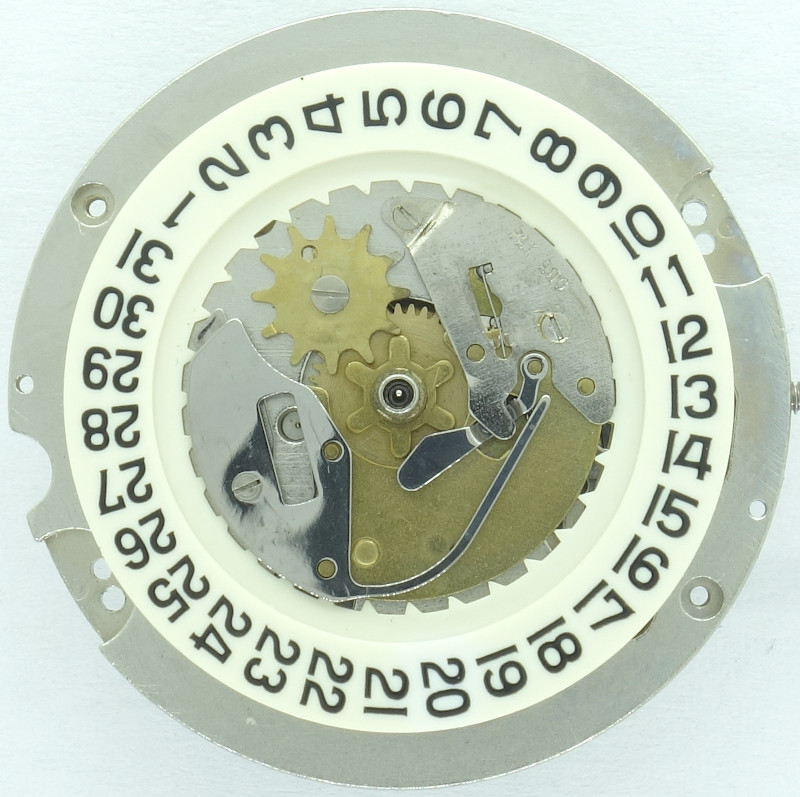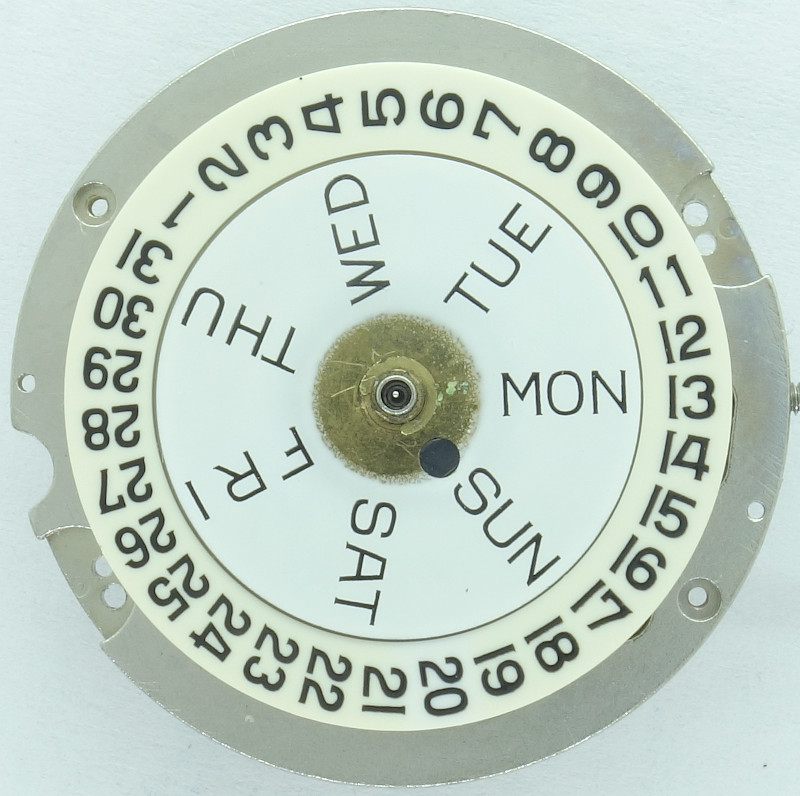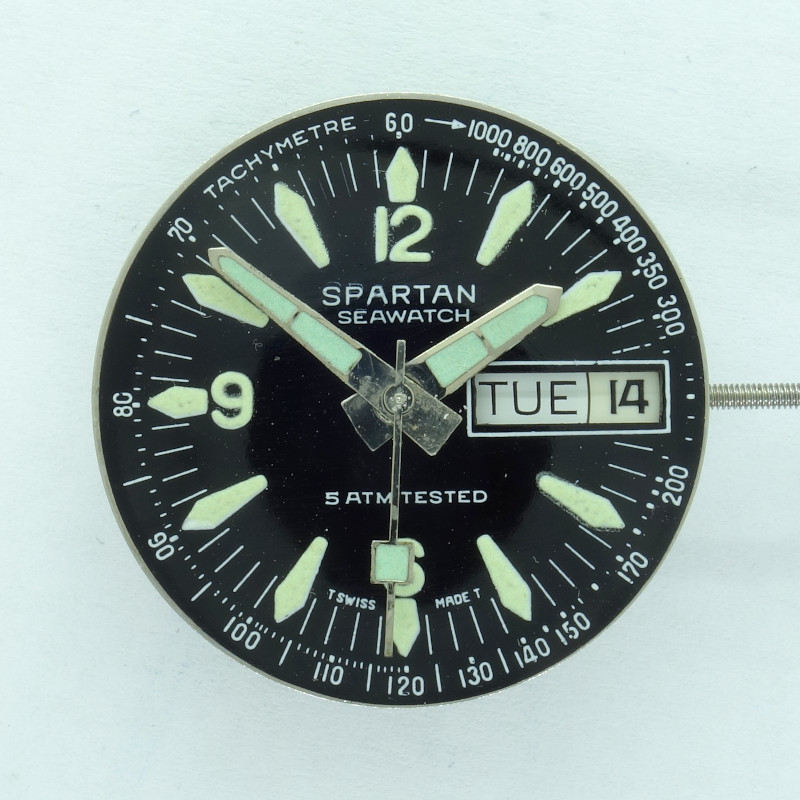Description
The Ronda 1217 shown here is part of the large caliber series Ronda 1013 of Roskopf-type pin lever movements. It extends the caliber Ronda 1215 with a weekday indication.
Interestingly, its measured diameter of 11 1/2 lignes is significantly smaller than its official diameter of 12 lignes.
Except of one alibi cap jewel on the non-hidden upper balance wheel bearing, there are no jewels at all in this movement. Nevertheless, all bearings are pretty fine and well made, so that this movement can be seen as one of the better pin lever movements.
The gear train is officially designated as being of a Roskopf type, but it is more like that of a traditional lever movement with a decentral minute wheel.
The mainspring barrel drives the great driving wheel, followed by third wheel, directly driven center seconds wheel and escape wheel.
A true Roskopf movement would have had one reduction step less (e.g. by having a larger great driving wheel and a lacking third wheel), but Ronda themselves designate it as a “Roskopf” movement.
As balance, a simple two leg balance with finger (instead of an ellipsis) is used, which is not shock protected. It beats with 18000 A/h can can be adjusted at the hairspring key only.
The Ronda 1217 uses a pin lever escapement.
As with a Roskopf movement, the hands on the dial side are driven by the barrel. However, this does not happen via a double wheel on the barrel, but rather the open barrel only drives the internal drive of the double cannon pinion. And unlike purebred Roskopf movements, the hour wheel is not driven by the barrel, but by a completely normal change wheel.
Last but not least, the use of a yoke winding mechanism is unusually high-quality for a Roskopf pin lever movement. It is also very cleverly designed, as the angle lever has its own spring, which can be seen between the 5 and 6 o’clock positions.
The hour wheel drives two components of the calendar mechanism: The switching wheel with its movable switching finger, which ensures that the date ring does not get caught on the switching star when it is corrected, and then there is the correction mechanism, which advances the date ring when the hands are turned anti-clockwise.
The movable shift finger is incorporated into the underside of the switching wheel.
As often seen on such complex calendar mechanisms, the Ronda 1217 uses some fly-friendly springs, too.
One of the fingers of the date switching wheel extends upwards and moves the weekday disc one position forward every 24 hours.
The lever near the center of the movement ensures that the weekday disc snaps neatly into position.
The weekday disc is axially fixed to the hour tube with a snap ring.
In the lab
Timegrapher result
Here you can see, how a well made execution can positively influence the timegrapher results. They are much better than of most other, simpler, pin lever movements.| horizontal positions | |||
|---|---|---|---|
| dial up | +27 s/d | 230° | 0.1ms |
| dial down | +12 s/d | 222° | 0.1ms |
| vertical positions | |||
| crown right (12 up) | -20 s/d | 200° | 0.2ms |
| crown up (3 up) | +-0 s/d | 187° | 1.1ms |
| crown left (6 up) | -10 s/d | 195° | 0.8ms |
| crown down (9 up) | -16 s/d | 197° | 0.5ms |
Technical data
| Manufacturer: | Ronda |
| Caliber: | 1217 |
| Caliber base: | Ronda 1013 |
| Size: | 12''' (measured: 25,6mm) |
| A/h: | 18000 |
| lift angle: | 46° |
| Number of jewels: | 1 |
| Escapement: | Pin lever |
| Balance types: |
monometallic anular balance (two legs) |
| Shock protection(s): |
none |
| Balance bearing / direction hairspring: | Clockwise |
| Moveable stud: | yes |
| Adjust mechanism: | Hairspring key |
| Construction: |
|
| Construction type: | pillar construction |
| Winding mechanism: | yoke winding system |
| Setting lever spring: | 5 hole(s) |
| Attachment of setting lever: | plugged |
| Features: |
|
| References: |
Flume: K3 - |
| Inventory number: | 23044 |
